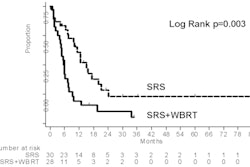External-beam partial-breast irradiation is more cost-effective for treating postmenopausal women diagnosed with early-stage breast cancer than either conventional whole-breast radiation therapy or brachytherapy partial-breast irradiation.
That's according to the findings of an analysis published in the June 1, 2009, issue of the International Journal of Radiation Oncology, Biology, Physics (Vol. 74:2, pp. 440-446). The authors claim that their study is the first cost analysis of these three forms of early-stage breast cancer treatment, according to lead author Dr. David Sher, a radiation oncologist at Dana-Farber Cancer Institute in Boston.
While external-beam partial-breast irradiation may lead to high rates of local recurrence of breast cancer in future years, researchers at the Harvard Radiation Oncology Program in Boston predicted that it is more cost-effective due to its lower cost and lower toxicity. The technique uses high-energy external x-rays to deliver radiation to the breast after a lumpectomy. The patient receives treatment twice daily for four to five days.
The researchers developed a Markov model to describe the health states of patients 15 years after radiotherapy for early-stage breast cancer. External-beam radiation therapy and balloon brachytherapy partial-breast irradiation provided comparable outcomes, but at different costs.
Sher and colleagues determined that the incremental cost-effectiveness ratio for whole-breast radiation therapy compared with external-beam partial-breast irradiation was $630,000 per quality adjusted life-year.
An earlier study had determined that under most circumstances, the quality adjusted life expectancy was higher when the patient received external-beam partial-breast irradiation. From the perspective of the patient, a five-day course of therapy compared to five to seven weeks of daily radiation treatment is more convenient, easier to complete, and may significantly reduce the patient's out-of-pocket costs or amount of work time lost.
The American Cancer Society (ACS) estimates that almost 200,000 women will be diagnosed with breast cancer in 2009. Cancer treatment centers may wish to give preference to external-beam partial-breast irradiation treatment instead of whole-breast radiation therapy for appropriate patients, the researchers suggested. Due to the high cost of balloon brachytherapy treatment, it is unlikely to be cost effective unless the quality of life proves to be superior, they said.
Related Reading
Effectiveness of APBI breast cancer treatment is age-neutral, study suggests, April 20, 2009
Study: APBI compares favorably to standard RT, October 1, 2008
Copyright © 2009 AuntMinnie.com



















